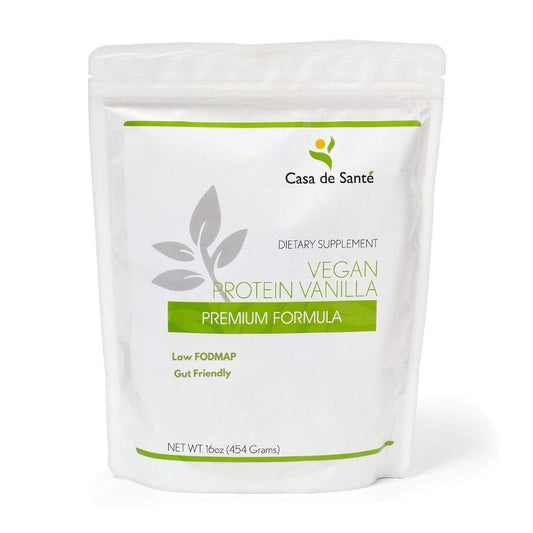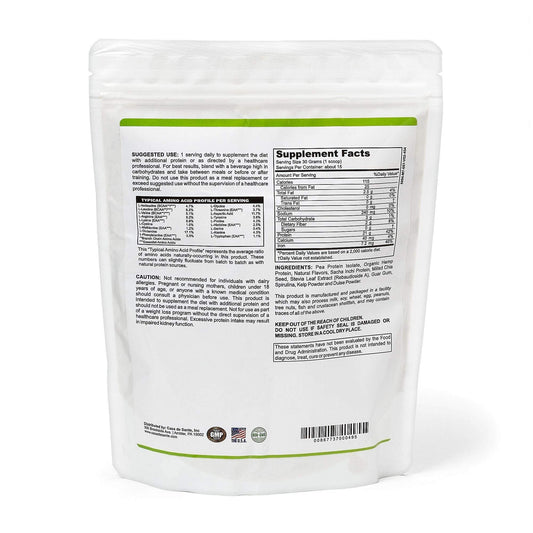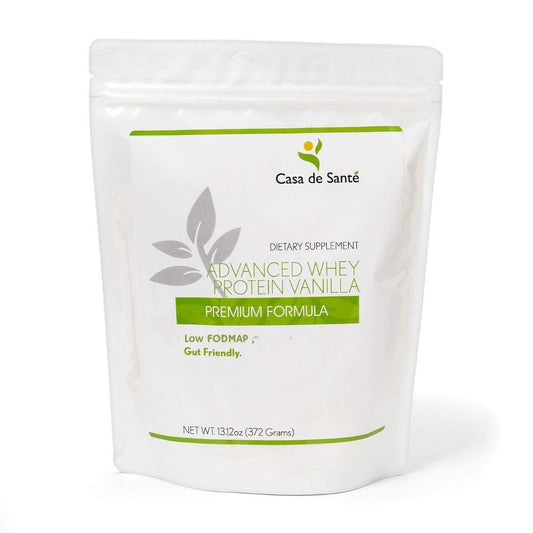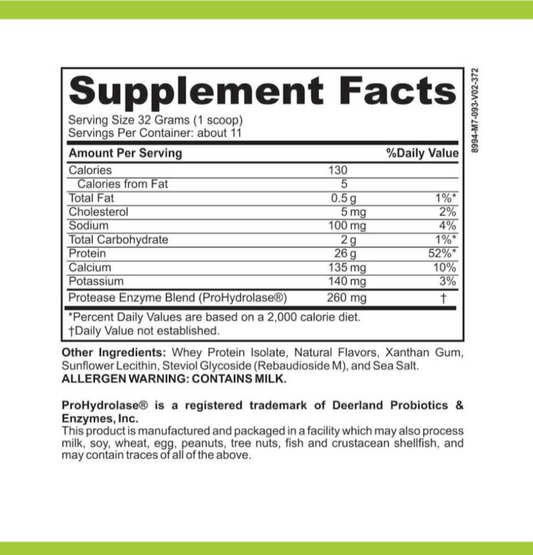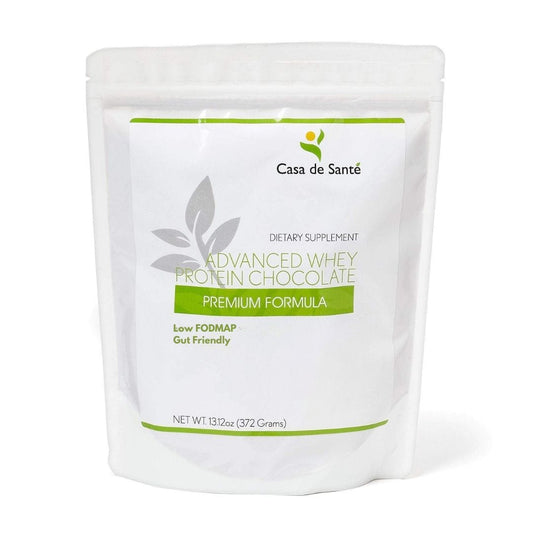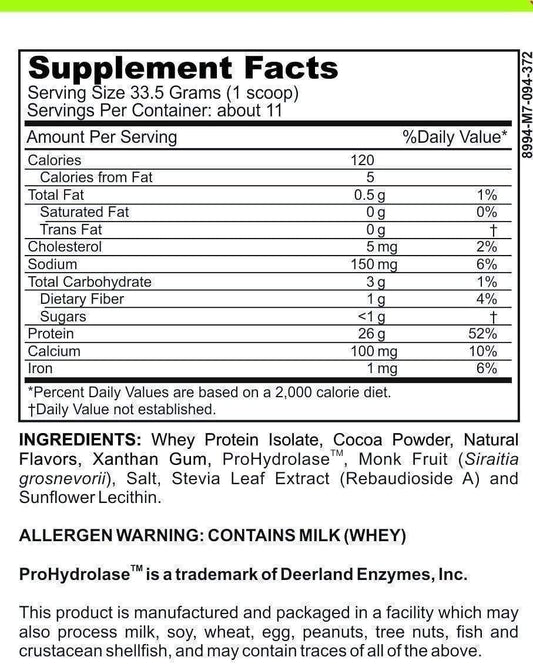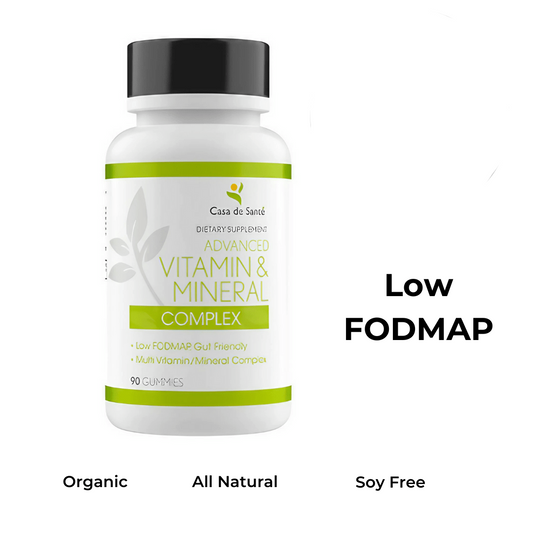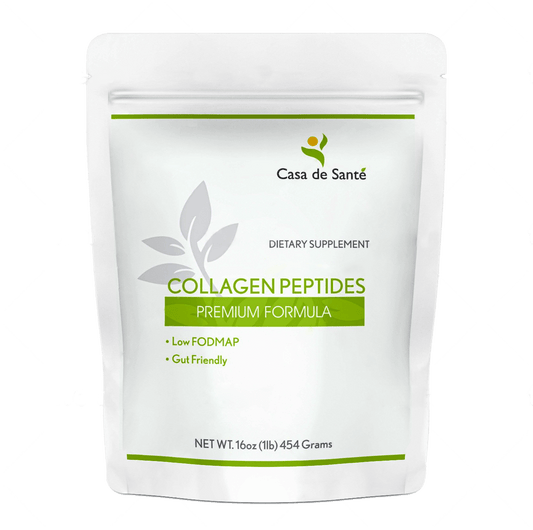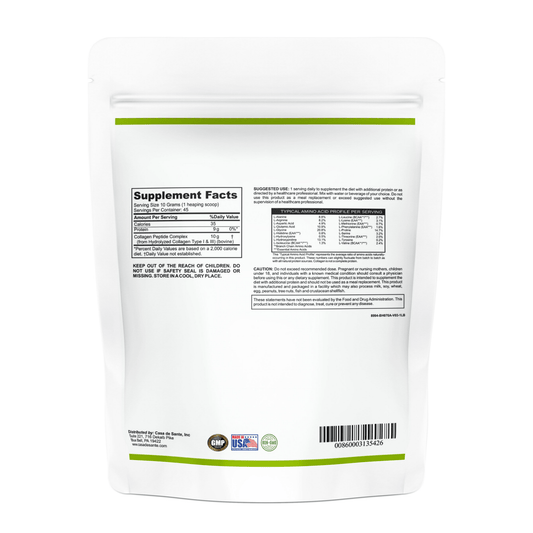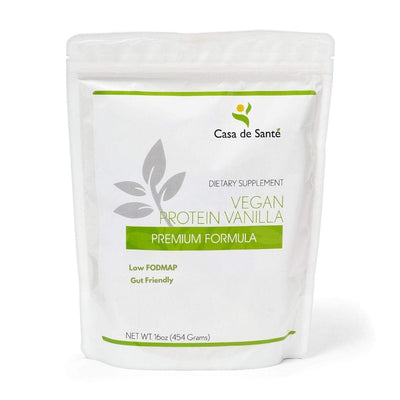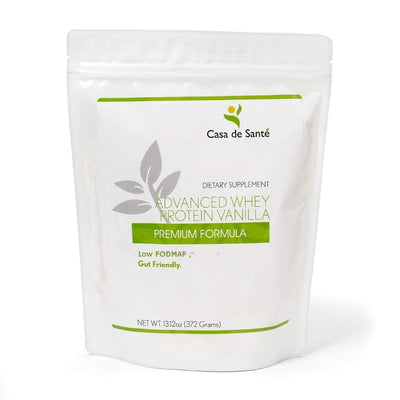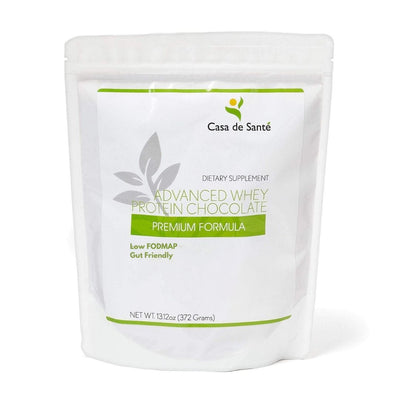Low FODMAP Green Smoothie: A Nutritious Guide for Easy Digestion
Low FODMAP Green Smoothie: A Nutritious Guide for Easy Digestion
If you're looking for a nutritious and refreshing way to start your day, a low FODMAP green smoothie could be the perfect choice. These smoothies are not only packed with vitamins and minerals, but also cater to those following a low FODMAP diet due to digestive issues or sensitivities. This article will explore the benefits and key ingredients for some truly delicious and gut-friendly green smoothie recipes.
Incorporating the right combination of fruits and vegetables is essential for creating a tasty and low FODMAP green smoothie. Low FODMAP fruits like pineapple, kiwi, and certain quantities of banana are often used to bring natural sweetness, flavor, and texture to your beverage. For the green component, vegetables such as spinach, kale, and cucumber provide a rich source of vitamins and fiber to boost your overall health.
As you read on, you will find a variety of exciting and delicious low FODMAP green smoothie recipes to try at home, ensuring you stay on track with your diet while enjoying a refreshing and nutritious drink. Happy blending!
Understanding FODMAP
FODMAP stands for fermentable oligosaccharides, disaccharides, monosaccharides, and polyols. These short-chain carbohydrates are poorly absorbed by the small intestine, leading to digestive distress for some people. Symptoms may include cramping, diarrhea, constipation, stomach bloating, gas, and flatulence.
If you suffer from IBS (Irritable Bowel Syndrome) or SIBO (Small Intestinal Bacterial Overgrowth), a low FODMAP diet can help manage your symptoms. Monash University has spearheaded much of the research surrounding the FODMAP diet and has developed a comprehensive list of high and low FODMAP foods.
A low FODMAP diet focuses on limiting or eliminating high FODMAP foods, as these can be trigger foods for digestive discomfort. Replacing high FODMAP foods with low FODMAP alternatives helps improve your gut health. It's important to remember that everyone has different tolerance levels, and what might trigger symptoms in one person may be perfectly fine for another.
When following a low FODMAP diet, it's essential to be mindful of FODMAP stacking. This occurs when multiple low FODMAP foods are combined, potentially leading to a buildup of FODMAPs in your meal. This can inadvertently cause discomfort, even though each individual ingredient is low FODMAP.
One way to incorporate a low FODMAP diet into your daily routine is by starting your day with a FODMAP-friendly green smoothie. This smoothie can be made using low FODMAP fruits and vegetables, like kiwi and pineapple, providing a nutritious and delicious option that supports your gut health.
Green Smoothie Basics
A green smoothie is a nutritious and delicious drink made by blending leafy green vegetables, fruits, and liquid. They offer a variety of health benefits and can be an easy way to incorporate more vegetables into your diet. With a few simple ingredients and guidelines, you can create a perfect green smoothie tailored to your taste and dietary needs.
First things first, choose your base liquid. Water is a common choice for green smoothies due to its neutral taste and added hydration benefits, but you could also use other liquids like non-dairy milk or coconut water. This choice can greatly affect the smoothie's flavor profile, so pick the one that suits your preferences and dietary needs.
Next, you'll need some leafy greens. Spinach and kale are popular options for green smoothies thanks to their mild taste and high nutrient content. Baby spinach, in particular, is easy to blend and doesn't overpower the other ingredients. Don't be afraid to experiment with other greens like chard or romaine lettuce to find the combination that works best for you.
Now, it's time to add some fruit to your green smoothie. Bananas and berries are classic choices as they add natural sweetness as well as a creamy texture. Pineapple and kiwi are also great options for adding a tropical twist to your smoothie while cucumber can provide a refreshing and hydrating element. Remember to stick with low FODMAP fruits and vegetables if you're following a specific diet.
Finally, to make your smoothie thick and smooth, toss in a few ice cubes before blending. This not only chills the drink but also adds to its thickness and prevents ingredients from separating. The more ice you add, the thicker your smoothie will be.
Here's a quick summary of what you'll need for a basic green smoothie:
- Liquid base: water, non-dairy milk, or coconut water
- Leafy greens: spinach, kale, chard, or romaine lettuce
- Fruit: bananas, berries, pineapple, kiwi, or cucumber
- Ice cubes
Remember, you can adjust the amounts and ingredients to suit your taste and dietary needs. As you gain experience making green smoothies, don't be afraid to get creative with additional mix-ins such as nut butters, seeds, or protein powder for an extra boost of nutrition and flavor. Happy blending!
Low Fodmap Green Smoothie Recipe
Ingredient Selection
To make a delicious and healthy low FODMAP green smoothie, carefully select your ingredients. Focus on low FODMAP fruits and vegetables to ensure your smoothie is gentle on your digestive system. Here are some great options for your smoothie:
- Fruits: Pineapple (300 grams or 2 cups), banana (use 1 firm, unripe banana)
- Vegetables: Spinach or kale (2-4 cups), cucumber
- Extras: Coconut oil (2 teaspoons), chia seeds, dried shredded coconut, ginger
- Liquid Base: Almond milk (3-4 cups), soy protein milk, or another low FODMAP milk
- Superfood Boost: Spirulina (3 teaspoons or 15 grams)
- Enhancers: Lime juice (from 1 squeezed lime), happiGut™ or Kfibre (4 teaspoons)
Preparation Methods
Once you have gathered your ingredients, follow these steps to create your low FODMAP green smoothie:
-
Blend: Place the pineapple pieces, spinach or kale, cucumber, unripe banana, coconut oil, and any desired extras (chia seeds, dried shredded coconut, ginger) into your blender. If using unfrozen pineapple, add a few extra ice cubes.
-
Add Liquid: Pour almond milk, soy protein milk, or your chosen low FODMAP milk into the blender to achieve the desired consistency. Adjust the amount based on your preference for a thicker or thinner smoothie.
-
Superfood & Enhancers: If desired, add spirulina, lime juice, and happiGut™ or Kfibre to boost the nutritional content of your smoothie and enhance the flavor.
-
Blend Again: Blend all ingredients together until smooth. Adjust the blending time to achieve your desired smoothie texture.
-
Yield & Serving Size: This recipe yields approximately 2 servings of low FODMAP green smoothie. Divide the mixture evenly between two glasses and serve immediately. Enjoy your nutritious and delicious low FODMAP green smoothie!
Nutritional Benefits
A low FODMAP green smoothie can offer you a variety of health benefits due to its nutritional content. Being rich in vitamins, minerals, and other essential nutrients, this smoothie can become a valuable addition to your diet.
Firstly, a well-designed green smoothie includes leafy greens such as kale or spinach that are great sources of vitamins A, C, and K. These vitamins play vital roles in maintaining your eyesight, promoting healthy skin, supporting immune function, and enhancing blood clotting. Additionally, the greens offer minerals like calcium and iron, crucial for bone health and oxygen transportation in your body.
Incorporating low FODMAP fruits, such as pineapple or cantaloupe, provides a natural sweetness and additional nutrients. Pineapple, for instance, is a source of the enzyme bromelain, which has anti-inflammatory properties and supports gut health by breaking down undigested proteins in the intestinal tract. Cantaloupe, on the other hand, is rich in vitamin C, potassium, and magnesium, contributing to healthy immune function, electrolyte balance, and muscle function.
Adding yogurt to your green smoothie not only delivers a creamy texture but also introduces nutrients like calcium, vitamin D, and protein. Calcium is essential for strong bones and teeth, while vitamin D helps your body absorb calcium more effectively. Protein is a fundamental building block for your muscles, skin, and cells, making it a crucial macronutrient to consume.
Don't forget that green smoothies can also be an excellent source of dietary fiber, particularly when you include fibrous fruits and vegetables. Fiber is beneficial for your digestive system, assisting in regular bowel movements and promoting gut health. Just remember to balance the high fiber ingredients with low FODMAP options to ensure easier digestion for those with IBS or related concerns.
To sum it up, a low FODMAP green smoothie can truly be a powerhouse of essential nutrients that benefit your overall health. So, go ahead and enjoy this refreshing and nutrient-dense beverage to experience the advantages it brings to your wellbeing.
Additional Ingredient Options and Substitutes
When it comes to creating a low FODMAP green smoothie, there are plenty of ingredients you can choose from to personalize and enhance the taste of your drink. In this section, we will discuss some additional ingredient options and substitutes to help you craft a delicious and gut-friendly smoothie.
If you prefer a creamy smoothie, consider using almond milk or coconut milk as a base instead of water. Both of these options are low FODMAP-friendly and can add a rich, velvety texture to your drink. If you have a blender that can handle it, blending in some oats is another great way to add creaminess and thickness to your smoothie while keeping it low in FODMAPs.
Spice up your green smoothie with a hint of ginger. Not only does ginger add a pleasant zing, but it may also help with digestion-related issues. Alternatively, use cinnamon for a warm and comforting taste.
To boost the nutritional content of your smoothie, consider adding some chia seeds. Chia seeds are a great source of fiber, omega-3 fatty acids, and various micronutrients. However, remember to keep your serving size small (1-2 tablespoons), as larger amounts could become problematic for those with IBS.
When selecting low FODMAP vegetables for your smoothie, options like spinach, kale, and cucumber are ideal. They provide essential vitamins and minerals without causing digestive discomfort. You could also experiment with adding zucchini or a small amount of broccoli for variety.
Sweeten your smoothie by incorporating fruits like ripe pineapple or blueberries. If you prefer a different kind of sweetener, opt for maple syrup or a small touch of coconut oil. Both of these options are low FODMAP and can add subtle sweetness.
Enhance the flavor of your green smoothie by adding a hint of lime juice. Lime can brighten up the taste and provide a refreshing, citrusy burst. If you're feeling adventurous, try adding a pinch of spirulina for an extra boost of nutrients and a vibrant green color.
For an additional protein source, consider adding a spoonful of peanut butter. This will not only increase the protein content of your smoothie, but it will also add a delicious, nutty flavor. Be sure to choose a natural peanut butter without added sugar or high FODMAP ingredients.
With these ingredient options and substitutes in mind, you can confidently create a low FODMAP green smoothie that suits your taste buds and supports your digestive health. Enjoy experimenting with different combinations to find your perfect blend.
Importance of Texture in Smoothies
Achieving the right texture in your FODMAP green smoothie is an essential aspect of enjoying this nutritious beverage. The texture of a smoothie can greatly impact your overall experience, and it can be a personal preference whether you enjoy a smooth, creamy, or thinner consistency. In this section, we will discuss the importance of texture and provide tips on how to tailor your smoothie to your liking.
A smooth and silky texture is a consistent feature in many delicious smoothies. You may prefer this texture as it can create a pleasant mouthfeel and also allow for easy consumption of the drink. To obtain a smoother texture, consider using ingredients like spinach, kale, and fruits like pineapple. Make sure you blend the ingredients well, a high-powered blender will likely be effective in achieving this consistency.
In contrast, a creamy consistency can be particularly satisfying and feel more indulgent. Achieving this texture may involve using ingredients such as yogurt or dairy-free alternatives like almond or coconut milk. For a low FODMAP green smoothie, opt for goat's milk yogurt or lactose-free milk options. Additionally, introducing avocados in your smoothie is another excellent way to create a creamy consistency without disrupting the low FODMAP balance.
On the other hand, you may prefer a thinner consistency for your smoothie. This can be great when you want a more refreshing and lighter beverage, especially during warmer days or after exercise. To create a thinner consistency, simply add more liquid to your smoothie, such as water, coconut water, or low-FODMAP milk alternatives. Increase the liquid gradually until you reach your desired consistency.
As you explore the world of FODMAP green smoothies, remember the importance of texture in creating a satisfying and enjoyable drinking experience. Experiment with different ingredients, blending methods, and liquid ratios to achieve the perfect texture that suits your preferences. By personalizing your smoothie's texture, you can ensure that each sip is both delicious and tailored to your needs.
Health Benefits
Digestive Health
A low FODMAP green smoothie can significantly improve your gut health and reduce unpleasant symptoms like bloating. This type of smoothie contains fruits, vegetables, and dairy alternatives that are low in fermentable carbohydrates, which can help alleviate symptoms of irritable bowel syndrome (IBS) and small intestinal bacterial overgrowth (SIBO). The resistant starches in these smoothies also feed beneficial bacteria in the gut, promoting the production of postbiotic butyrate, which nourishes the cells lining the colon.
Heart Health
Incorporating low FODMAP green smoothies into your diet can contribute to better cardiovascular health. The vitamins and minerals found in the fruits, vegetables, and dairy alternatives used in these smoothies can provide essential nutrients for heart health, such as potassium and magnesium. Additionally, the high fiber content helps to regulate cholesterol levels, lower blood pressure, and stabilize blood sugar levels. All these factors contribute to a reduced risk of developing heart disease and promoting overall cardiovascular health.
Cancer Prevention
Though no single food or drink can entirely prevent cancer, a diet rich in a variety of fruits and vegetables, like those found in low FODMAP green smoothies, may help lower your risk. These nutrient-packed beverages contain plenty of vitamins, minerals, and antioxidants that support your immune system and can reduce inflammation. A robust immune system and reduced inflammation may lower the risk of developing certain types of cancer. By incorporating low FODMAP green smoothies into your diet, you're making a positive step towards promoting a healthier lifestyle and potentially reducing your risk of cancer.
Using Smoothies in Your Low Fodmap Diet
Smoothies can be a delicious and nutritious addition to your low FODMAP diet. They make a great option for breakfast, lunch, or even a snack, providing essential vitamins and nutrients from fruits, vegetables, and other ingredients.
Starting your day with a low FODMAP smoothie is an easy way to fuel your body. You can prep them ahead of time, blend them up in the morning, and take them with you on the go. When choosing ingredients for your smoothies, stick to low FODMAP fruits and vegetables, such as pineapple, kiwi, spinach, or cucumber. To avoid FODMAP stacking, be mindful of the portion sizes of each individual ingredient.
During the elimination phase of your low FODMAP journey, it's crucial to select certified low FODMAP recipes to ensure dietary compliance. A well-balanced green smoothie recipe could include a combination of low FODMAP fruits, some leafy greens, and a low FODMAP milk alternative, like soy milk or lactose-free milk.
When choosing a protein source for your smoothies, you may want to consider adding nut butter, such as almond or peanut butter. However, be cautious with portion sizes and select brands without any added high FODMAP ingredients. Another option is to incorporate a low FODMAP, gut-friendly protein powder, ensuring it has been tested and certified to be suitable for the diet.
By following low FODMAP recipes and being mindful of your ingredient choices, you can successfully incorporate smoothies into your daily routine, making it easy to maintain a balanced and satisfying low FODMAP diet.
Remember that everyone's tolerance for different foods varies. It's important to pay attention to how you feel after consuming your smoothie, and adjust your ingredient choices and portion sizes accordingly. Don't hesitate to consult a dietitian experienced in the low FODMAP diet for personalized guidance and advice.
Other Types of Low FODMAP Smoothies
In addition to green smoothies, there are several other low FODMAP smoothie options you can enjoy. These smoothies are not only delicious, but they provide a variety of flavors and nutrients while adhering to the low FODMAP guidelines.
Frozen Pineapple and Spinach Smoothie: Combining frozen pineapple with spinach creates a refreshing and tropical-inspired smoothie. To make this, simply blend together a small portion of frozen pineapple, spinach leaves, and a low FODMAP milk, like almond milk. Top it with chia seeds for added fiber and omega-3s.
Blueberry Smoothie: Blueberries are low FODMAP in small quantities and make for a delicious antioxidant-rich smoothie. Blend together a small portion of blueberries, a tablespoon of almond butter, and your choice of low FODMAP milk. Add a scoop of low FODMAP protein powder or chia seeds for an extra boost of protein.
Chocolate Smoothie: Indulge in a chocolate smoothie without the guilt by using unsweetened cocoa powder and a low FODMAP sweetener like maple syrup. Combine a tablespoon of cocoa powder, a serving of low FODMAP milk, ice, and a drizzle of maple syrup in a blender. Add a scoop of low FODMAP protein powder or a tablespoon of almond butter for added creaminess and richness.
Strawberry Smoothie: Strawberries are low in FODMAPs and provide natural sweetness to smoothies. Blend together a handful of strawberries, a few ice cubes, and your choice of low FODMAP milk. Add in a scoop of low FODMAP protein powder or a tablespoon of chia seeds if desired for extra nutrition.
Experiment with these recipes to find your favorite low FODMAP smoothies, and feel confident that these smoothies are not only delicious but also suitable for your dietary needs.
Expert Tips and Advice
When creating a delicious and easy low-FODMAP green smoothie, using natural ingredients is key. It's important to choose ingredients that will not only taste amazing but also support your gut health and adhere to the low-FODMAP guidelines.
Consulting with a dietitian familiar with the low-FODMAP diet can help ensure you are selecting the most appropriate ingredients for your smoothie. However, here are a few helpful tips and advice to get you started.
1. Use low-FODMAP fruits and vegetables. Spinach, kale, and cucumber are great options for your green smoothie. For a burst of sweetness, consider adding pineapple or cantaloupe, as they are low in FODMAP content as well.
2. Incorporate lactose-free milk alternatives. Using lactose-free milk or a plant-based milk alternative, such as almond or coconut milk, will help keep your smoothie low in FODMAPs and suitable for those with lactose intolerance.
3. Choose the right protein powders. Look for whey isolate protein powders, which are typically low-FODMAP friendly. Alternatively, soy protein powders are also a good option, as long as they don't contain high-FODMAP additives.
4. Be mindful of additives. It's important to read labels and avoid any protein powders or supplements containing high-FODMAP ingredients like inulin or chicory root. Instead, opt for a brand like HUM Nutrition that focuses on using natural, low-FODMAP ingredients.
5. Sign up for a newsletter. Staying informed on the latest low-FODMAP recipes, tips, and advice can help keep your smoothie game strong. Many dietitians and nutritionists offer newsletters that cater to this specific diet and can provide valuable information to guide your smoothie-making journey.
Remember, creating a low-FODMAP green smoothie doesn't have to be difficult. With these tips and advice in mind, you can confidently whip up a tasty, gut-friendly beverage that caters to your dietary needs.
Adapting the Smoothie to Different Diets
When it comes to adapting a low FODMAP green smoothie for various diets, there are simple tweaks you can make to ensure the smoothie fits your nutritional needs. This section will discuss how to adjust the recipe for vegan, paleo, and those with concerns about gas.
For a vegan green smoothie, you'll need to replace any dairy products with plant-based alternatives. If the original recipe calls for milk or yogurt, opt for almond milk, coconut milk, or a dairy-free yogurt made from soy, almond, or coconut. Additionally, make sure to choose a plant-based protein powder if desired.
Paleo adherents can also enjoy a low FODMAP green smoothie by making a few adjustments. Since paleo diets avoid dairy, you can substitute dairy milk with almond or coconut milk. If the recipe includes any grains or legumes, simply omit them from the smoothie. You can boost the nutritional value of the smoothie by adding more fruits, vegetables, or seeds like chia or flax.
To minimize the risk of gas, pay close attention to the fruits and vegetables used in the smoothie. Some fruits and vegetables are more likely to cause gas, such as apples, beans, and certain cruciferous vegetables. Instead, focus on low FODMAP options like spinach and kale for the greens, and pineapple or bananas for the fruits. Blending the smoothie thoroughly will also help break down the fibers, making it easier for your body to digest and reducing the chances of gas.
Here are some general tips to adapt the green smoothie to various diets:
- Vegan: Replace dairy products with plant-based alternatives, and use plant-based protein powders if desired.
- Paleo: Substitute dairy milk with almond or coconut milk, and boost nutritional value with seeds like chia or flax.
- Minimizing gas: Use low FODMAP fruits and vegetables, and blend the smoothie thoroughly to break down fibers.
Remember to always listen to your body and adjust your green smoothie according to your specific dietary needs and preferences. This will help you enjoy a delicious, nutritious, and satisfying drink that aligns with your personal health goals.

